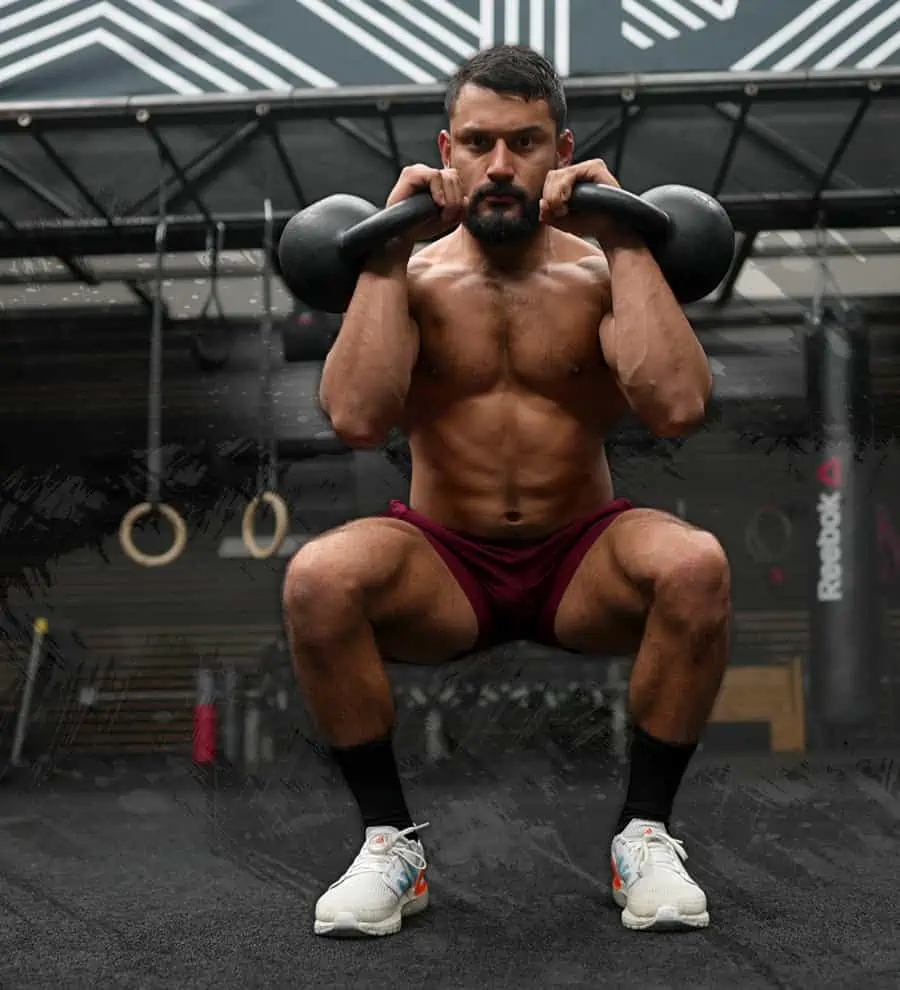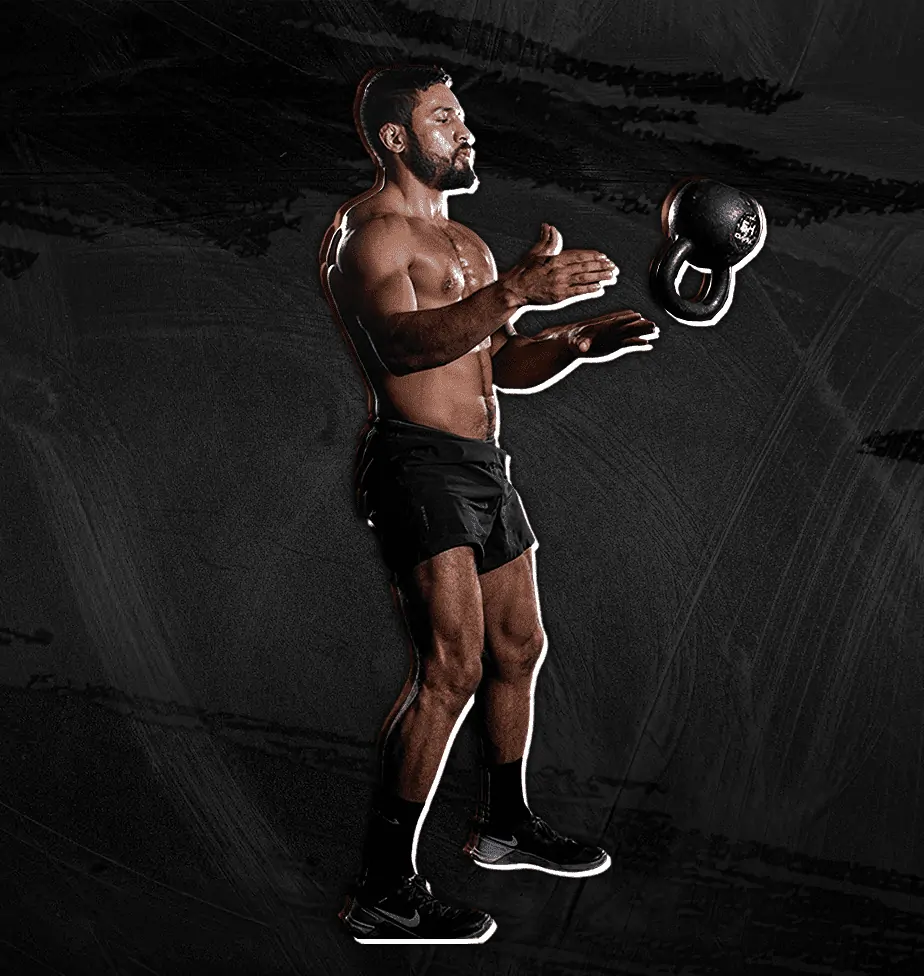
It’s no secret that running, while great for your body as a whole, is also simultaneously hard on your body. As a high-impact exercise, it can put a lot of pressure and wear and tear on your joints, ligaments, and even lower back.
One of the recommendations for runners to help prevent this wear and tear and improve performance is to lift weights. This is essentially because strengthening your muscles has a cushioning and lifting effect, which helps blunt the impact forces of running.
And, while lifting weights in general may provide this benefit, training with kettlebells may be a more effective approach for results.
Let’s dive into why, plus other benefits of kettlebell training for runners.
Can Help Reduce Impact

Running is a bittersweet exercise. Sweet because of all the cardiovascular and endurance benefits, but bitter because of the impact your joints endure. Interestingly, some of this impact that your joints take during runs can be mitigated through strength and mobility training.
How so? To begin, muscle is not only meant to be used for strength output, put also for cushioning, security, and stability. Think of a couch for a moment: the inside of a couch is constructed of metal, or possibly wood, and some springs and plastic attachments. These represent your skeletal system and joints. Now, there are no cushions on this couch, but I want you to flop down on it. Ouch, right? You hitting the bare bones of the couch is very similar to your joints and bones “hitting” the ground as you run.
Now, imagine the couch has think, but flexible cushions. When you flop onto the couch now, does it hurt? Not likely. The cushions dampen the impact. Muscle does this in your body by acting as a support system and impact-reducer for your joints, tendons, and skeletal system. When you run, you are at the mercy of gravity; however, if you have a decent amount of flexible muscle outside of your joints and bones, it helps “hold everything in place” and absorbs impact shock. Another similar analogy is that of a tire surrounding a rim – the rubber tire (muscle) absorbs shocks from the road and keeps the rim (joints, tendons, bones) in place.
And, while strength training of any type can be helpful, training with kettlebells targets not only large muscle groups, but also smaller muscles, called stabilizer muscles, that play a critical role in reducing impact and keeping everything in alignment when you run. More on that below.
Can Improve Posture, Core + Glute Strength

As you probably know, posture plays a huge role in running safely and running well. Slouching or forward hip tilts can change the impact sites of your body, potentially exposing you to all types of injuries, as well as low back or shin pain.
The thing to realize about posture is that it isn’t necessarily just using willpower to stand up straight (or, in this case, run straight). You core, back, glute, and stabilizer muscles actually play a dominant role in keeping your spine and hips in proper alignment. I any of these areas are weak, your skeletal system and joints may take the brunt of the impact of your runs, which can eventually lead to pain or injury.
However, when these areas are strengthened, they help “secure” your spine and hips in place and pull your shoulders and neck back into their ideal position. Fortunately, kettlebells help work all of these areas at once: in just one movement, the kettlebell swing, you are engaging your upper and lower back muscles, your core and obliques (extremely important stabilizer muscles), and your glutes.
Maintaining proper form can also help enhance your endurance and reduce discomfort that may slow you down. It’s sort of like the difference between running with a rock in your shoe, which throws off how your foot lands, and running with no rock in your shoe; the latter is more comfortable, so you’ll be able to keep running for longer.
Can Improve Mobility

Of course, not all strength training is the same, and not all muscles are the same. As a runner, you definitely don’t want stiff muscles, since you’re moving at a quick pace and (potentially) over varied terrain. Because of this, flexibility in your muscles is crucial, since stiffness could lead to a pull or other injury.
Working with kettlebells helps maintain not only muscle flexibility by working through full ranges of motion, but also joint flexibility. Kettlebell exercises tend to flow more than traditional weight lifting exercises, utilizing more rotation and variation between higher and lower planes. This flow and rotation encourages flexibility in your joints, tendons, and muscles, while simultaneously strengthening them.
This can be especially beneficial if you’re running outdoors, or if you’re looking to compete in cross-country. Kettlebells and their ability to enhance your mobility can increase your balance and coordination – both critical for moving quickly and efficiently outdoors.
If you’re ready to feel what working with a kettlebell is all about, hit up this kettlebell flow specifically for runners that @mattchoi_6 and I put together:
Kettlebell Flow For Runners
As you can see, you don’t need intensely intricate moves to start bolstering your running with kettlebell training. Focus on hitting these moves up a few times a week, and you should start to notice an improvement in your performance.
Ready to get started with one of the best kettlebells on the market? Use my code: PRIMAL at checkout here to SAVE 10% on Onnit kettlebells!
Onnit kettlebells were designed to meet the needs of elite athletes, making them some of the sturdiest and high-quality bells around.
Each kettlebell includes a powder finish for a better grip, and are also color-coded, so you know which bells to match at all times.
